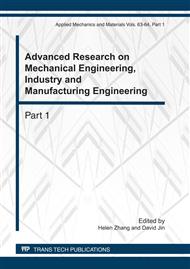p.835
p.841
p.846
p.850
p.855
p.859
p.863
p.868
p.874
Extended Web Services Model Design for Non-Functional Requirements
Abstract:
To manage web services, it needs to monitors quality of them periodically when changing their status like availability, performance and security policy. The non-functional requirements of web services based on QoS parameters has been presented in this paper for the purpose of finding the best available web service during Web services discovery process. We also presented an extended web services framework based on SOA structure for providing information about quality of web services and build a prototype for applying quality factors.
Info:
Periodical:
Pages:
855-858
Citation:
Online since:
June 2011
Authors:
Keywords:
Price:
Сopyright:
© 2011 Trans Tech Publications Ltd. All Rights Reserved
Share:
Citation:


